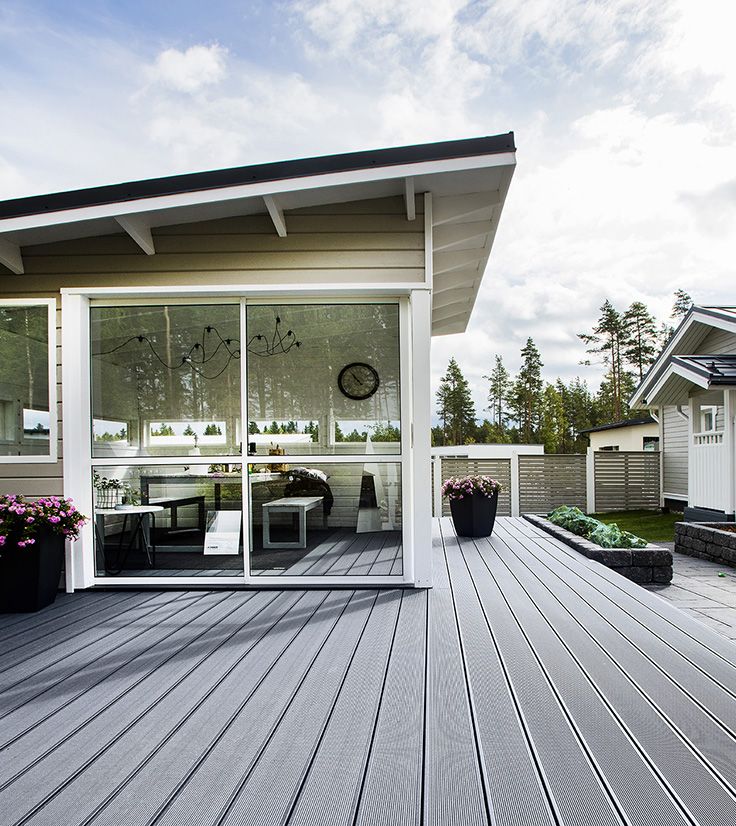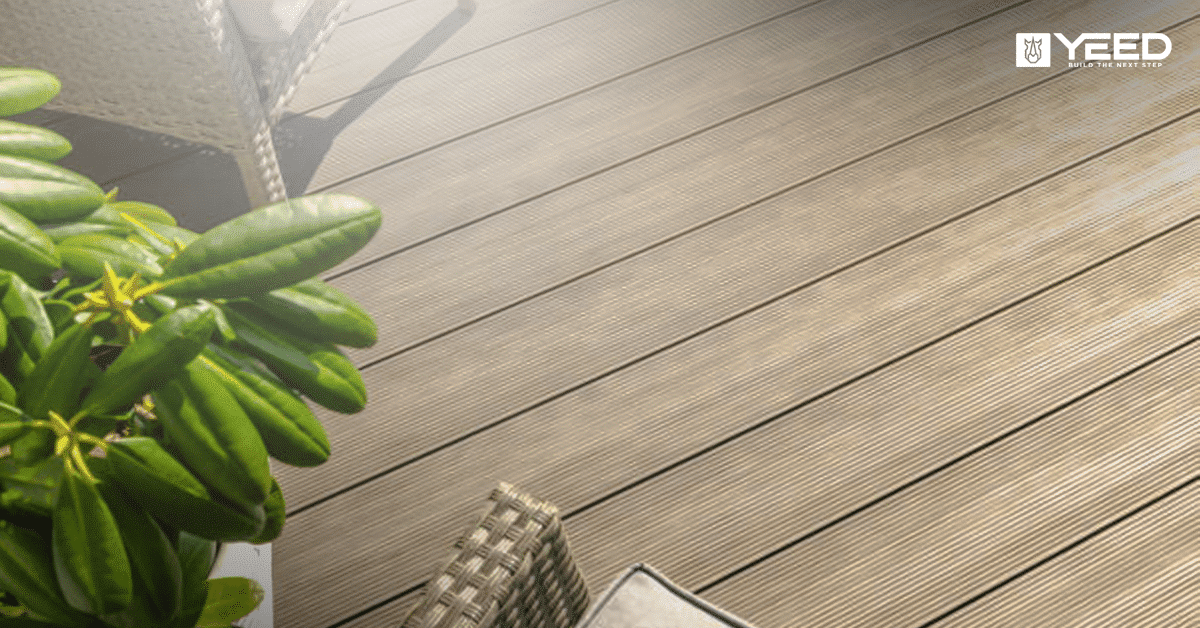Installation tips: ensuring good ventilation for your terrace
Creating a terrace is a great way to add a functional and aesthetically pleasing outdoor space to your home. Whether you’re dreaming of alfresco dining, barbecues with friends or relaxing alone, a well-designed terrace can transform your garden into a true haven of peace. However, among the many elements to consider when designing your terrace, ventilation occupies a crucial place. Proper ventilation is essential to ensure the durability and longevity of your terrace, preventing excessive moisture build-up, mold and decay of materials. In this article, we’ll explore in detail some essential tips for ensuring optimal ventilation when installing a deck. Discover our product sheets.
Choosing the right material:
Choosing the right material:One of the first choices you’ll need to make when creating your terrace is the material you’ll use. The choice of material can influence ventilation, as some materials are more resistant to humidity than others. Exotic woods such as teak and ipe are prized for their durability and natural resistance to decay. However, if you opt for wood, make sure you choose one treated specifically for outdoor use, and treat it regularly with a water-repellent sealer. Composite materials are also popular, as they are less prone to moisture and warping than wood.
Air circulation blades spacers :
We strongly recommend the use of spacers when installing your deck boards. Spacers are small supports that maintain an even space between the boards. This allows air to circulate freely beneath the deck, preventing moisture build-up and promoting rapid drying after bad weather. Spacers are particularly important for wooden decking, as they raise the boards above the ground, reducing the risk of rotting due to direct contact with the soil.
Tilt for Water Flow :
Proper slope is an often overlooked but crucial aspect of your deck design. Make sure your terrace has a slight slope, generally outwards, to allow rainwater to drain off efficiently. Stagnant water can cause moisture and mold problems, and can damage materials over time. A well-planned slope ensures that water is quickly drained away, avoiding these problems.
Use of Permeable Barriers :
If your deck is located above a used space, such as a covered patio, consider the use of permeable barriers. These special barriers allow air to circulate freely while offering protection against debris and moisture build-up. Permeable barriers are available in a variety of materials and configurations, allowing you to choose the ones best suited to your specific design and needs.
Regular maintenance :
Once your deck is in place, regular maintenance is essential to maintain optimum ventilation. Regularly clean the spaces between the boards to remove any debris that could obstruct air circulation. Also inspect spacers and permeable barriers to make sure they’re in good condition. Regular maintenance will extend the life of your deck and maintain proper ventilation. Here are some key points to consider when maintaining your deck to ensure continuous ventilation.
Discover our blog on : How to effectively clean a stain on a wood deck?

1. Nettoyage Fréquent des Espaces Entre les Lames :
The spaces between your deck boards can accumulate debris such as leaves, twigs and dirt over time. This debris can obstruct air circulation and create damp patches conducive to mold growth. To prevent this, plan to clean these spaces regularly with a stiff brush or air blower. Periodic cleaning will allow air to circulate freely and prevent moisture build-up.
2. Blades Spacers inspection :
The spacers play a crucial role in the ventilation of your terrace. They maintain a uniform distance between the blades, allowing air to flow underneath. Regularly check the condition of the spacers to ensure they are not damaged, displaced or weakened. If you notice any problems, replace the defective spacers immediately to maintain proper ventilation.
Want to know more about structural inspection? : watch the video of Daniel DARGIS by clicking here!
3. Control of Permeable Barriers:
If you have used permeable barriers to protect the space under your deck, check them regularly for signs of deterioration. Permeable barriers can become obstructed over time, which can reduce air circulation. If you notice obstructions or tears, make necessary repairs or replace defective barriers to maintain effective ventilation.
4. Preservation Treatments:
Depending on the material of your deck, preservation treatments may be necessary to maintain its resistance to moisture and the elements. Wooden decks should be regularly treated with a water-repellent sealant to prevent excessive water absorption. Follow the manufacturer’s recommendations for appropriate preservatives and frequency of application.
5. Mould Growth Prevention:
Mold can grow in damp and poorly ventilated environments. To avoid this, be sure to keep your deck clean and dry. In addition to cleaning the spaces between the blades, watch for areas in the shade that may be more prone to moisture. If you notice mold stains, treat them quickly with appropriate cleaning products to prevent their spread.

6. Regular Maintenance Programming:
To ensure that the maintenance of your terrace remains consistent, establish a regular maintenance schedule. Mark dates for cleanings, inspections and preservation treatments in your calendar. Regular preventive maintenance is more effective in maintaining ventilation and avoiding possible costly long-term problems.
In short, regular maintenance of your terrace is essential to maintain adequate ventilation and ensure its durability. By following these tips, you can enjoy your terrace for many years, knowing that you have taken the necessary steps to ensure continuous air circulation and preserve the beauty of your outdoor space. A well-maintained terrace not only remains visually pleasing, but it also continues to offer you a place of relaxation and carefree entertainment.
To ensure that the maintenance of your terrace remains consistent, establish a regular maintenance schedule. Mark dates for cleanings, inspections and preservation treatments in your calendar. Regular preventive maintenance is more effective in maintaining ventilation and avoiding possible costly long-term problems.
regular maintenance of your terrace is essential to maintain adequate ventilation and ensure its durability. By following these tips, you can enjoy your terrace for many years, knowing that you have taken the necessary steps to ensure continuous air circulation and preserve the beauty of your outdoor space. A well-maintained terrace not only remains visually pleasing, but it also continues to offer you a place of relaxation and carefree entertainment.
In conclusion, the ventilation of a terrace is a key element to consider when laying it. Choosing the right materials, using spacers to promote air circulation, planning an adequate inclination for water flow, using permeable barriers and maintaining regular maintenance, you can create a terrace that not only beautifies your outdoor space, but also remains solid and functional for many years to come. A well-ventilated terrace is more resistant to bad weather and remains a place of relaxation and fun for the whole family.

